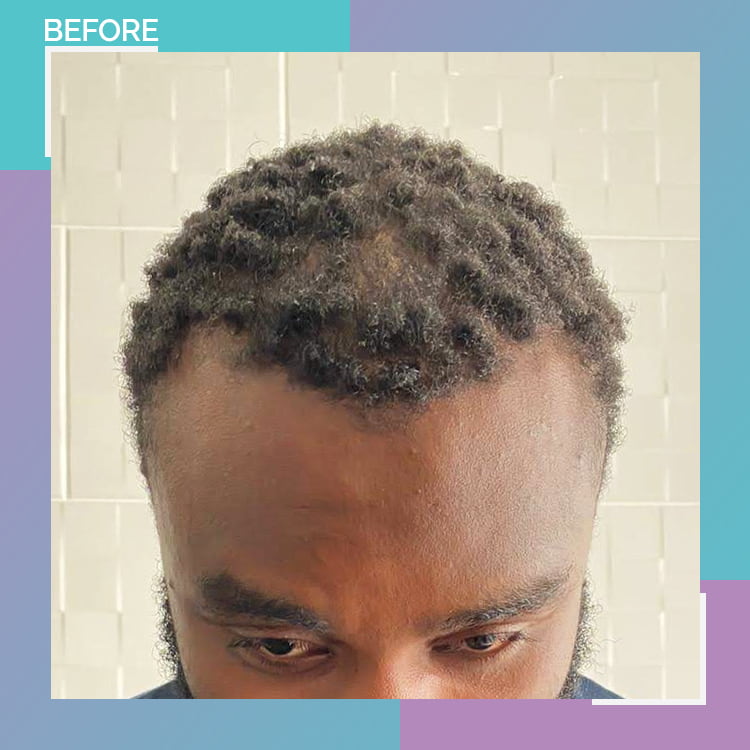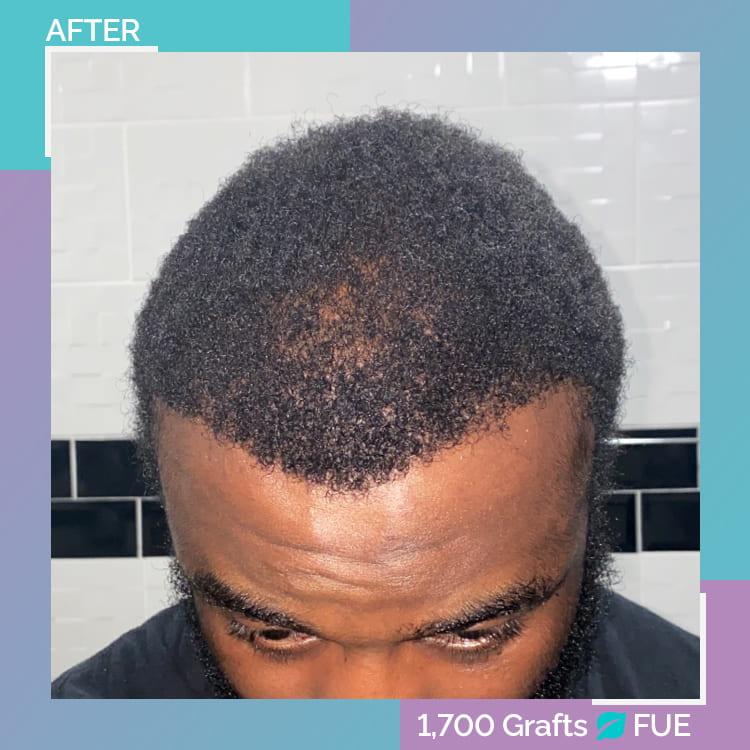The introduction of hair transplant surgery has given hope to millions around the globe who have lost their hair permanently. From improving a person’s self-esteem and body image, many find this surgery to be life-changing and regret not having it done sooner.
The surgery uses a person’s own hair, so the results are completely natural, as can be seen in hair transplant before and after photos. Moreover, you can enjoy the outcome for a lifetime.
More than 25,000 people have undergone this surgery with Longevita, and we’re proud to have been a part of so many transformative journeys — all with a 98% success rate.
Hair Transplants Offered by Longevita
At Longevita, we offer the latest hair transplantation technique to patients: Follicular unit extraction or FUE. Contrary to the older follicular unit transplantation (FUT) method, it leaves no visible scars and enables faster recovery.
However, there are two other advanced versions of FUE that use special tools to further improve the results: Sapphire FUE and direct hair implantation (DHI).
While the traditional method also gives natural-looking results, you can get them even more so with the v-tipped Sapphire blades that allow for an accurate placement of hair grafts. Moreover, they reduce trauma to the scalp, speed up recovery and guarantee better survival of hair grafts, resulting in excellent outcomes.
DHI, which uses Choi pens to place hair grafts back into the scalp not only offers remarkable results, but is also particularly suitable for achieving high density. And if you need less than 3,000 grafts, this surgery can also be done unshaven. Additionally, similar to Sapphire FUE, it allows for better graft survival and quicker recovery.
Traditional FUE
- Permanent and natural-looking results
- High graft survival rate
- Blunt metal blades require applying more pressure to the scalp
- Faster recovery than FUT
Sapphire
- Permanent and even more natural-looking results due to accurate hair graft placement enabled by the Sapphire blades
- Guaranteed better graft survival and overall improved results
- Sharper blades result in relatively less trauma to the scalp
- Faster recovery than FUE
DHI
- Permanent, natural-looking and high-density results
- Protects the grafts even better for their increased survival
- Avoids extra pressure on the scalp and damage to veins. Also has a smaller incision size, making it less traumatic
- Faster recovery than FUE
Hair Transplant Before and After Photos: Why Are They Important?
Through hair transplant before and after photos, it is possible to get a sense of the potential outcome of your own surgery. For this, specifically, check out photos of patients whose cases appear similar to yours, in terms of extent of baldness, type and quality of hair, as well as donor density.
If you like a particular result, you could also bring it as a reference picture for your surgeon during consultation. Showing hairline transplant before and after photos, for instance, will help your surgeon better understand your aesthetic goals if you like a certain design. Although, keep in mind that results may vary from person to person.

Our Hair Transplant Before and After Gallery
We are UK’s #1 choice for medical travel to Turkey for a reason.
Take a look at the hair transplant before and after photos to see what we can do for you!
FUE Hair Transplant Before and After Photos


Case Overview
Estimated Norwood Stage: 4-5
Patient had experienced noticeable hairline recession and thinning in the frontal and crown areas. Following a hair transplant, his hairline was permanently restored, and a fully dense, natural coverage was achieved.


Case Overview
Estimated Norwood Stage: 5
Patient’s hair had significantly thinned out, especially at the front. A single session of FUE under local anaesthesia completely transformed his hair, making it look very full and natural.


Case Overview
Estimated Norwood Stage: 5
Patient had a clear bald spot in the crown area and was losing hair in the front. Since he had a very strong donor area, a successful hair transplant was performed for dense and permanent coverage.


Case Overview
Estimated Norwood Stage: 3
Patient had a FUT hair transplant somewhere else before but had a high and distinctly M-shaped hairline with temple recession. Through a hair transplant, his hairline was lowered, and all the balding areas were fully covered.
View More Images


Case Overview
Estimated Norwood Stage: 3-4
Patient’s hairline had significantly receded, with only a small tuft of hair at the centre of the frontal area. Through a hair transplant, a new hairline was designed for him while giving him full and thick growth at the front.


Case Overview
Estimated Norwood Stage: 4a
Patient’s hairline had receded almost all the way to the crown, with only sparse, thinned-out hair at the front and centre. With only one session of hair transplant, however, healthy grafts were transplanted in the front, mid-scalp and crown with excellent results.


Case Overview
Estimated Norwood Stage: 5
Patient had experienced temple hair loss, making his hairline look uneven. His crown area had also thinned out. But through a hair transplant, he was able to achieve wonderful coverage with no visible sign of any surgery.


Case Overview
Estimated Norwood Stage: 3
Patient’s hairline had receded in an M-shape with noticeable balding in the temples. He was able to completely restore and transform his hairline while rejuvenating the frontal area through transplantation surgery.


Case Overview
Estimated Norwood Stage: 3
Patient’s temples and hairline had receded, leaving it uneven. He had a very successful hair transplant, allowing him to achieve full, thick and healthy growth.


Case Overview
Estimated Norwood Stage: 3
Patient’s hairline had receded and increased the overall size of his forehead with it. Through a hair transplant, his hairline was lowered, and healthy grafts were transplanted in the front, giving him incredibly youthful results.


Case Overview
Estimated Norwood Stage: 4a
All of the patient’s front, mid-scalp and crown had thinned (miniaturised) hair, with the skin of the scalp showing through. Through transplantation surgery, healthy grafts were transplanted in the front and crown areas for dense and natural coverage.


Case Overview
Estimated Norwood Stage: 4a
Patient had formed a more U-shaped hairline due to recession, with some thinning hair at the front and centre. Following a hair transplant, he grew a very natural-looking hairline with his balding areas permanently covered.


Case Overview
Estimated Norwood Stage: 5
All of the patient’s front, mid-scalp and crown had thinned (miniaturised) hair, with the skin of the scalp showing through. Through transplantation surgery, healthy grafts were transplanted in the front and crown areas for dense and natural coverage.


Case Overview
Estimated Norwood Stage: 3
Patient’s hairline had receded, especially around the temples. But complete restoration was made possible through a hair transplant surgery, with very natural-looking results.
DHI Hair Transplant Before and After Photos


Case Overview
Estimated Norwood Stage: 4a
Patient had experienced significant thinning on the top along with hairline and temple recession. Through direct hair implantation surgery, permanently dense coverage and hairline restoration were achieved.


Case Overview
Estimated Norwood Stage: 4
Patient’s hairline had receded to the point of forming a clear M-shape and he had also experienced thinning in the crown. With the help of transplant surgery, his bald spots were completely covered with no visible signs of any surgery.


Case Overview
Estimated Norwood Stage: 3-4a
Patient had a sparse v-shaped widow’s peak growth at the middle of his scalp, with noticeably low density in the front and top. Thanks to a healthy donor area, he was able to achieve a fantastic new hairline with thick frontal coverage.


Case Overview
Estimated Norwood Stage: 2
Patient had poor hair growth around the temples, with some short, thinning hair. With the help of a hair transplant, however, a much-straighter and even-looking hairline was achieved.
Afro Hair Transplant Before and After Photos


Case Overview
Estimated Norwood Stage: 2-3 (all front)
Patient had a distinct M-shaped hairline with a clear recession of the temples. He was found suitable for an Afro hair transplant and successfully had the surgery, allowing him to achieve full and dense growth in previously balding areas.


Case Overview
Estimated Norwood Stage: 3 (vertex)
In addition to hairline recession and crown hair loss, a noticeable bald patch had formed in the front of the patient’s scalp. Through the help of a hair transplant, healthy hair grafts were distributed in his frontal and crown areas with incredibly transformative results.


Case Overview
Estimated Norwood Stage: 3
Patient had thin, sparse hair at the front of his scalp and his temples had noticeably receded. By having a hair transplant, not only were his bald patches fully covered, but his hairline was straightened as well with fantastic results.


Case Overview
Estimated Norwood Stage: 4
Patient had a FUT surgery somewhere else but wasn’t satisfied with the results as there were visible balding areas at the front when he was 43 years old. He decided on another hair transplant – this time an FUE. Owing to a strong donor area, he was able to achieve a very good density with full coverage and permanent results.
View More Images


Case Overview
Estimated Norwood Stage: 3
Patient had experienced balding in the front and crown areas. As a result of his hair transplant, his hairline was restored and healthy hair growth with very natural results was achieved. The patient also had PRP to further stimulate his hair growth after transplantation surgery.


Case Overview
Estimated Norwood Stage: 3 (vertex)
Patient’s frontal hairline recession was accompanied by slight thinning in the crown area of the scalp. He had a hair transplant for full restoration of his hairline and coverage in the crown. The transplanted hair blended seamlessly with his non-transplanted hair, giving him exceptional results.


Case Overview
Estimated Norwood Stage: 4a
Patient had experienced extensive hair loss in the frontal area with only some sparse, poor growth at the centre. He had a successful hair transplant surgery using the maximum number of healthy grafts that could be safely extracted, resulting in an incredibly full head of hair.
Female Hair Transplant Before and After Photos


Case Overview
Patient’s frontal hairline appeared pushed back, with thinning, broken-looking strands along it, giving her forehead a wide appearance. In a single session of hair transplant, strong and healthy grafts were transplanted into the patient’s frontal area to achieve a dense and even hairline with permanent results.


Case Overview
Patient had a prominent bald spot in the front of her middle partline and her hairline recession also made her forehead appear bigger. However, she was able to achieve a very full and even hairline through a hair transplant. She was also recommended a second hair transplant in the future for further improvement in the overall density.


Case Overview
Patient’s temple area had pushed quite further back and looked thinned out. With the transplantation of the grafts in the front, however, she obtained very full and natural coverage. There was no visible scarring either.


Case Overview
Patient had a high hairline with receded temples. Through a hair transplant, her hairline was lowered and temple areas were filled with healthy grafts from the donor area. The final results were very natural with no visible signs of surgery.
View More Images


Case Overview
Patient had short thin hair along her frontal hairline with a prominent temple recession. She underwent a hair transplant to successfully restore her hairline and achieve very full coverage overall.


Case Overview
Patient had short thin hair in the front of her hairline, but the actual hairline was pushed back. She underwent a hair transplant, where a new outline for her hairline was drawn and then filled out with healthy grafts. Her final results were very satisfactory.
Beard Hair Transplant Before and After Photos


Case Overview
Patient had sparse, patchy facial hair, making the beard look thinned out and less full. He underwent a beard transplant with 750 grafts from the scalp transplanted into the right cheek and 500 on the left cheek, achieving a naturally full and bushy beard.


Case Overview
Patient had poor facial hair growth in the beard, moustache and chin areas. 2,400 healthy grafts were placed in both cheeks (1,200 each) with 10-20 grafts in the moustache and 100 in the chin allowing for a thicker, healthier growth to frame the face.


Case Overview
Patient had a very patchy and sparse growth in the cheeks. But with the help of a beard transplant surgery, he saw a dramatic transformation in his facial hair growth, which became much thicker and fuller.


Case Overview
Low beard hair density was noted by the patient, with a desire for a thicker, fuller appearance of his facial hair. He underwent a beard transplant where healthy grafts were extracted from his scalp and successfully transplanted with very good results.
View More Images


Case Overview
Patient had thin and poor facial hair growth. The beard transplant performed, however, produced a very natural result, including full thick hair in the cheeks and moustache areas, with no bald patches.


Case Overview
Patient’s beard area had a strong outline, but the growth was not so full and dense. He underwent a beard transplant, dramatically strengthening the fullness of the target area with permanent results.
What Factors Influence the Result of a Hair Transplant?
The result of a hair transplant surgery can be affected by the following:
Strength of Donor Area
A hair transplant is possible because of the donor area — permanent hair at the back and sides of your scalp. And having a high hair density in your donor area will result in better density and coverage in your balding area. Alternatively, if you have low density, it will affect the amount of coverage you can achieve in the final outcome.
Surgeon’s Expertise
A surgeon’s skill is crucial to a successful hair transplant operation. How the grafts are extracted, handled, and implanted into the scalp is important because it can affect their survival rate. If, for instance, many of your hair grafts are damaged during the surgery, you will end up with poor hair growth and density.
While checking the hair implants before and after photos is a good place to start, you should also check the credentials of your surgeon, such as their diploma, training, experience, and board certification. As well, the facility in which they perform the surgery is important. Hygiene and safety are vital for reducing the risk of certain postoperative complications, such as an infection.
Adherence to Preoperative and Aftercare Instructions
Your surgeon will provide you with pre-and postoperative instructions to achieve the best possible results. And it’s your responsibility to strictly follow them.
For instance, before a hair transplant, patients are advised to stop smoking to avoid the risk of excessive bleeding. However, smoking is also discouraged post-operatively as it can increase the risk of infection and cause more scabbing and scarring — all of which will affect the outcome of your procedure.
Hair Characteristics
When looking at the hair graft before and after pictures, notice the difference between the results of patients with different hair types. If two patients with Caucasian hair and Afro hair both receive 2,000 grafts, Afro hair will provide more coverage because of its unique curl. The coverage might not be as dense for someone with straighter, thinner hair.
Health and Lifestyle
The results of a hair transplant are permanent. However, you can experience hair loss due to factors including ageing, genetics, certain medications (e.g., blood thinners or birth control), hormonal imbalances, dermatological problems, and even stress and smoking.
While they may be beyond your surgeon’s control, you can still be careful about some of them (such as smoking) to ensure the health of your hair after surgery.
Expectations From the Surgery
A hair transplant doesn’t reverse hair loss. It essentially redistributes the existing hair on your scalp in a way that your bald spots are successfully hidden, so there’s a limit to what can be achieved. An extremely high density of hair should not be expected after your surgery. It’s not feasible, and it will only lead to dissatisfaction with the final results.
Importantly, you also need to stay patient during the recovery process. The results of a hair transplant at 6 months vs 1 year will be vastly different because final results take at least 12 months.








Stories of Longevita patients
Hear from Longevita’s patients about their experiences.
"I'm overall super content with everything."
Swana
"I'm absolutely buzzed with the results"
Josh
"The team here at Longevita are amazing"
Ed
"Happy with the hairline and everything"
Junior Kablan
Patient Journey
Frequently asked questions
It can take 12-18 months for you to see the final results of your hair transplant. In the crown area, hair typically grows more slowly due to the thicker skin and slower blood circulation.
The hair transplant uses your own natural hair, and even after it’s transplanted, it’ll continue to grow just as it did in the donor site.
Since hair transplant is an invasive procedure, it’s not “scarless,” however, you also shouldn’t expect any visible scarring with it. The small, circular wounds in the donor area, as well as the incisions in the recipient area, fade with time.
Hair transplant gives permanent results because the hair follicles taken from the donor area are resistant to the hormone that causes hair loss. Therefore, your transplanted hair should never fall off.
Hair grafting for women is not only possible, but it can also yield extremely good results in the hands of the right practitioner.




